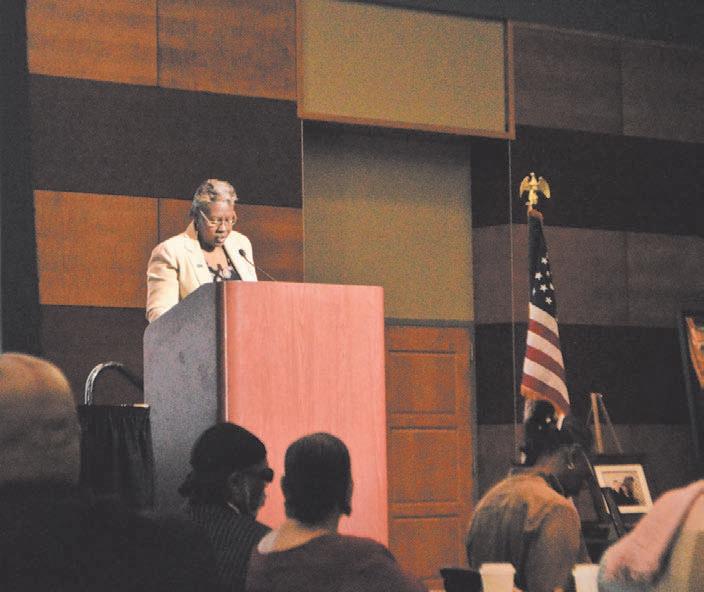
11 minute read
NEWS
from Feb. 20, 2020
STUDENTS HOUSED
According to a press release, the University of Nevada, Reno, has arrived at an agreement with two property companies to lease needed living space for students during the 2020-2021 academic year. Both properties are near campus and were built with students in mind. The first, called Canyon Flats, will house approximately 506 university students and residential staff. The second, Uncommon Reno, will house approximately 330 university students and residential staff.
Advertisement
Nye Hall, which was taken offline after the July 5, 2019 Argenta Hall explosion, will reopen in August 2020, providing an additional 530 beds to students. Argenta Hall is planned to reopen in August 2021.
The combined payment under the lease agreements for Canyon Flats and Uncommon Reno will cost approximately $10.1 million for the academic year. According to the press release, this “amount will be paid primarily from insurance proceeds,” and “housing rates will remain consistent” with the school’s currently published rates.
—JERI DAVIS
V-DAY WRAP UP
Depending on who you ask, Valentine’s Day is the holiday to celebrate love, the people who share in it and the beauty of romance, or a made-up, corporate holiday designed to increase consumer spending. Whether it be jewelry, chocolate or the iconic red rose, there are plenty of gifts to buy every year, and, according to the National Retail Federation, consumers spent more in 2020 on the holiday than in years past—$27.4 billion to be exact, up from $20.7 billion in 2019.
After Feb. 14 passes, though, those same gifts still line the shelves of stores everywhere. Stores like Walmart, CVS and Walgreens are left with the task of trying to sell the Valentine’s Day-themed gifts they set out weeks in advance.
With so much money spent on the holiday already, it can difficult to convince shoppers to buy stock that has seemingly already hit an expiration date. One of the ways of clearing all of the remaining stock is to put it all on clearance. Deals up to 50 to 80 percent off help move items off shelves so typical inventory can replace it. And buyers respond to the sales. Websites and blogs like allthingstarget.com (an independent website not affiliated with but reporting on Target) discuss expected sale dates and include recommendations for items that can be kept for future Valentine’s Days or incorporated into gifts for upcoming holidays like Easter.
Some companies are coming up with other strategies to ensure they can save themselves from having to get rid of purchased stock. Releasing items that aren’t specific to the holiday is one way of doing this, like candy that’s more brand than heart-shaped-box focused. Go to Walmart, and you’ll see displays of cookies and baked goods that are indeed red and pink but don’t scream Valentine’s Day in the slightest—especially when placed on a spring-themed table alongside newer seasonal items.
—KIRK GELLER
Reno-Sparks NAACP Health Committee Chair Janet Serial discussed the organization’s various health care initiatives.
PHOTO/JERI DAVIS
State of health
Reno-Sparks NAACP hosts new annual symposium to discuss health care
On Saturday, Feb. 15, the Reno-Sparks branch of the National Association for the Advancement of Colored People held its first annual African American Health and Environmental Justice Symposium at the University of Nevada, Reno.
The event brought together a diverse group of speakers who discussed topics ranging from health care workforce diversity to Alzheimer’s Disease and dementia in the black community and disproportionate impact of environmental injustice and climate change on communities of color.
After opening remarks from RenoSparks NAACP Second Vice-President Patricia Gallimore, the branch’s health committee chair, Janet Serial, took the stage to discuss the organization’s national health initiatives and how they’re being pursued locally. These initiatives include HIV and AIDS education and prevention, tobacco prevention, child health and wellness, and chronic disease prevention and management.
After discussing the branch’s work in these four areas, Serial told the audience that the point of the symposium was to spark broader community engagement in those issues through work with local black faith-based organizations and participating agencies.
“We will be spinning up campaigns,” she said. “The goal of this symposium is not just to come, gather, eat and leave. … This symposium is meant to be a call to action.”
But with a late start, an absent keynote speaker who was supposed to discuss the 2020 U.S. Census, and turnout relatively low compared to other NAACP events, some in attendance expressed frustration.
“I don’t see enough of the community here, and that is very upsetting to me—because we should be out advocating,” said NAACP member Quilistine Washington-Walker. “Churches—and I’m upset with us—because churches should be announcing these things so we know what’s going on in the community. … It’s up to us to be advocates for our own people. Come on. Wake up, please.”
However, the intimate crowd size did allow time for attendees to ask questions of the speakers, who gave presentations and also participated in panel discussions—and also allowed time for speakers to delve into the specifics of what their organizations do.
SPEAKING UP
First up among the speakers was Andrea Gregg, the executive director of the High Sierra Area Health Education Center, a federally and state funded 501(c)(3) nonprofit that works with under-served and rural populations in Nevada—working in collaboration with the UNR School of Medicine and the Office of Statewide Initiatives. The organization has staff based in Las Vegas, Reno and Elko and serves other rural counties as well.
Its goal, Gregg explained, is to “increase diversity among health professionals, broaden the distribution of the health care workforce” and “enhance quality care and improve heath care delivery, focusing on rural and underserved populations” through educational programs that target K-12 as well as undergraduate and graduate-level college students.
“We develop programs that cultivate this idea of pipelines for health care,” Gregg said.
The programs include a “Healthcare Heroes Camp” with curriculum that can be tailored for kids as young as third to fifth grade or fifth to eighth and covers teaching kids about the body, various career paths they can pursue in health care and hands-on engagement in a range of activities dissection to orthopedic casting and audiology screening.
“Through these targeted programs, it’s our hope that what we’re doing is really inspiring a young audience of students to get engaged in health care careers, get involved and recognize the benefits of being a health care champion in their communities—and then doing our part to really fulfill them and give them unique experiences so that they can help fill the state’s workforce needs,” Gregg said.
The programs—from those for the youngest participants to the collegelevel—also focus on teaching culturally competent care.
“So we’re talking about these ideas of adversity and diversity, cultural competency and implicit bias,” Gregg said. “So, what we do is we prepare and train aspiring health care professionals who are culturally responsive and are equipped to provide quality care in a multi-cultural setting.”
This topic was revisited by multiple speakers during the day, including Tina Dortch, program manager for the Nevada Office of Minority Health and Equity, who took part in a three-person panel discussion on Alzheimer’s Disease and dementia in the African American community alongside Denise Hund of the Alzheimer’s Association and Heather Haslmen of UNR’s Sandford Center for Aging.
According to information from the Alzheimer’s Association, African Americans are about two times more likely than white Americans to develop Alzheimer’s and other forms of dementia—but they’re less likely to have a diagnosis of the condition and are typically diagnosed once in later stages of the disease. One factor believed to contribute to this problem is that black patients often report having less respectful, and thus less productive, interactions with their health care providers— and panel moderator, Sandford Center Director Dr. Peter Reed, asked Dortch how health care providers might remedy these issues in order to get more information about Alzheimer’s and its contributing factors to the black community.
Dortch’s answer returned the symposium to the theme of culturally competent care. Physicians and other health care providers, she said, need to consider that patients—whether they’re black or a person of any other race— may bring cultural beliefs about health care, from home remedies to negative expectations about how they’ll be treated. To overcome it, she said she recommends health care workers follow the steps enumerated in an acronym she called “AWARE.”
“Accept someone’s behavior without holding them in judgment using yourself as a barometer,” she said. “Wonder what does the behavior that you’re seeing—what does it mean? … Ask what it means. If you have a non-compliant patient or a patient who is using other means than those you recommended, ask if there’s a reason or a rationale for that. … Research. Before a patient presents in the office, it does not hurt to do a bit of research about the culture. … And then, lastly, the ‘e.’ Only after you’ve had this dialogue as a practitioner, should you then explain what the behavior is that you’re hoping to achieve from this interaction. Only then should you start explaining what the course of care will be.”
Throughout the day, speakers reiterated to symposium participants that the goal of the event was to spark a call to action among local NAACP members. Speakers left informational handouts and their business cards at tables around the room and encouraged attendees to reach out with ideas, opinions and concerns. According to Gallimore, between now and the next annual summit, the Reno-Sparks NAACP branch and its members will be busy “getting out into the community, getting to know people” and getting to know their health care needs and goals.
Those who are interested in learning more about how they can get involved are advised to visit renosparksnaacp.org. Ω
In line
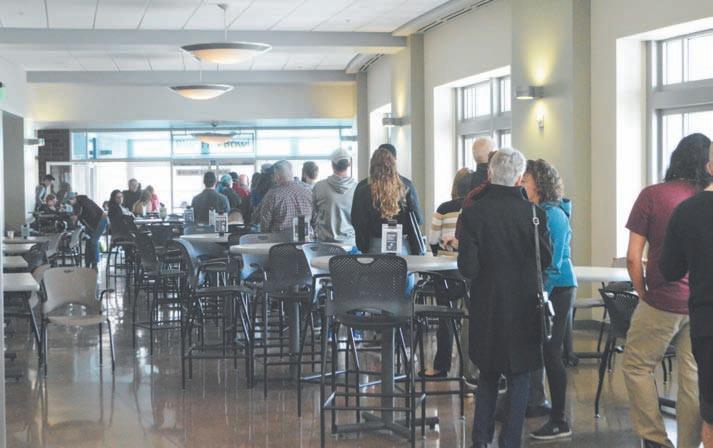
People lined up at the Joe Crowley Student Union on the first day of early voting in the Nevada Democratic Presidential Caucuses on Feb. 15. Early voting ran from Feb. 15-18. The line was long, and some voters decided to leave before they were able to vote. Others stuck it out.
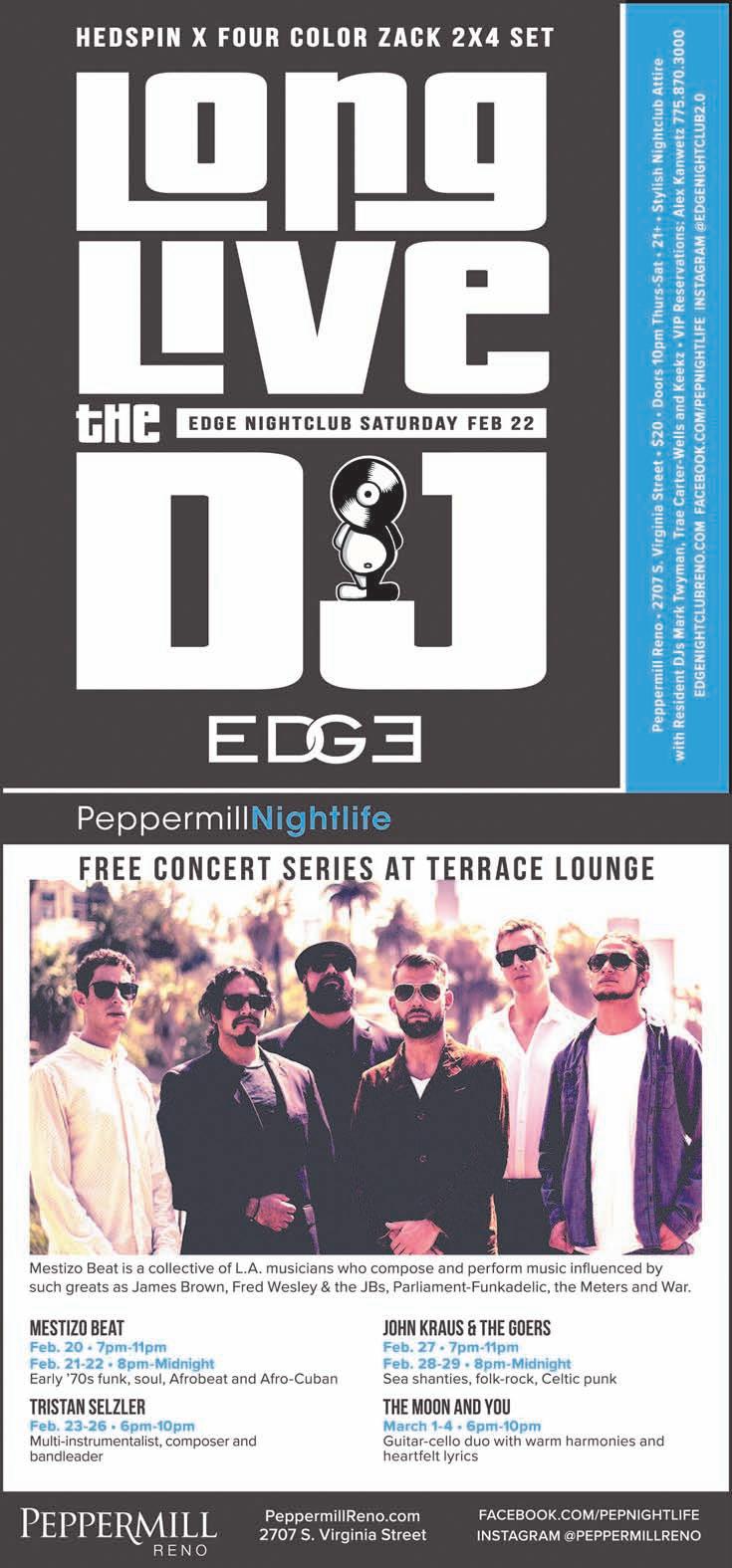
ASM GlobAl deliverS
Meet the public facility management group that is bringing business back to Northern Nevada
ASM Global, the worldwide leader in public facility management, is proud to manage the four public facilities under the organization of the Reno-Sparks Convention and Visitor’s Authority.
Bringing in almost 400 events and public shows between the four properties and over 500,000 attendees, these facilities have become a positive economic driver in the community.
“We employ over 190 regular staff and approximately 400 temps,” said Michael Day the ASM Global Reno General Manager. “We are proud to bring our experienced professional leadership to Reno. Our goal is to continuously improve customer service and provide the finest in hospitality, safety and cleanliness. We are hopeful that these everyday practices will lead to increased conventions and public events.” “Our goal is to continuously improve customer service and provide the finest in hospitality, safety and cleanliness.”
Michael Day ASM Global Reno General Manager
Day went on to say that the National Bowling Stadium is the host venue for the 2020 USBC Open Championships March 21 to July 12, which alone is expected to generate over $70 Million in local economic impact.
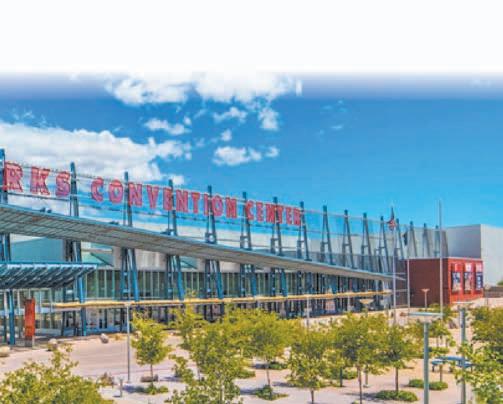
To stay updated on all the happenings around our Reno facilities, follow www.RenoEvents.com
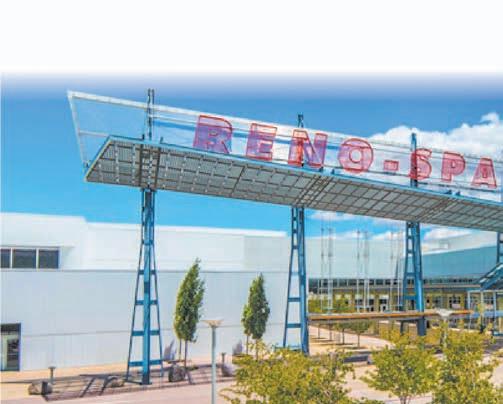
You will be the first to know about new entertainment coming to Reno and keep current with the news of all the fun and enriching events happening at the Reno-Sparks Convention Center, National Bowling Stadium, Reno Events Center, and the Reno-Sparks Livestock Events Center.
SAVOR…Reno-Sparks is the concessions and catering division for the facilities.
One area of focus for SAVOR is to source locally grown products and to partner with local businesses. Amongst SAVOR’s local partners are Keva Juice, Jack’s Popcorn, and New West Distributors. “No one has been a better partner than ASM Global and SAVOR,” said Jim Brant the VP and GM for New West Distributors. And Jack’s Popcorn is a particularly great story as Jack, a young entrepreneur who has downs syndrome makes the best popcorn which is always hot, flavorful, and delicious. Jack’s story and his commitment to excellence is inspiring!
ASM Global’s Reno venues:
About ASM Global
ASM Global was formed in October 2019 from the merger of AEG Facilities, the global innovator in live entertainment venues, and SMG, the gold standard in event management.
ASM Global is a venue management powerhouse. We span across:
5 14 continents contries 300+
venues
As the world’s most trusted venue manager, ASM Global provides the following services:
• venue strategy
• venue management • sales
• marketing • event booking • event programming • construction
• design consulting • pre-opening services
Among the venues in our portfolio are landmark facilities such as:
• McCormick Place & Soldier Field in Chicago • Los Angeles Convention Center • Colorado Convention Center • Tele2 Arena in Stockholm • Mercedes-Benz Superdome in New Orleans • Shenzhen World Exhibition and Conference Centre in Shenzhen, China
ASM Global also offers food and beverage operations through its concessions and catering companies.

ASM Global 4590 S. Virginia Street Reno, NV 89502 (775)229-7620










